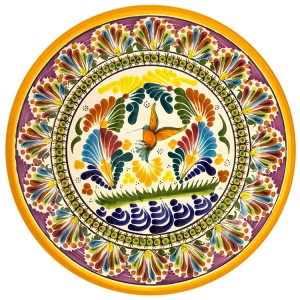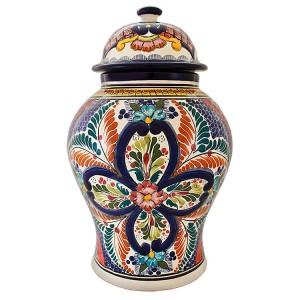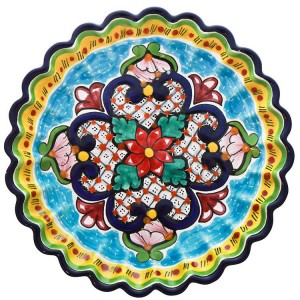Talavera – Made by hand, the craft object bears the finger prints, real or metaphorical, of the person who fashioned it. These fingerprints are not the equivalent of the artist’s signature, for they are not a name. Nor are they a mark or brand. They are a sign: the almost invisible scar commemorating our original brotherhood and sisterhood, made by hand, the craft object is made for hands, Not only can we see it; we can also finger it, feel it. We see the work of art but we do not touch it. The religious taboo that forbids us to touch saints=you’ll bum your hands if you touch the Tabernacle,’ we were told as children—also applies to paintings and sculptures. Our relation to the industrial object is functional; our relation to the work of art is semi-religious; our relation to the work of craftsmanship is corporeal. In reality, this last is not a relationship but a contact.
 The trans-personal nature of Talavera craftsmanship finds direct and immediate expression in sensation: the body is participation. To feel is primarily to feel something or someone not ourselves. And above all, to feel with someone. Even to feel itself, the body seeks another body we feel through others. The physical and bodily ties that bind us to others are no less powerful than the legal, economic and religious ties that unite us, Craftsmanship is a sign that expresses society not as work (technique) or as symbol (art, religion) but as shared physical life.
The trans-personal nature of Talavera craftsmanship finds direct and immediate expression in sensation: the body is participation. To feel is primarily to feel something or someone not ourselves. And above all, to feel with someone. Even to feel itself, the body seeks another body we feel through others. The physical and bodily ties that bind us to others are no less powerful than the legal, economic and religious ties that unite us, Craftsmanship is a sign that expresses society not as work (technique) or as symbol (art, religion) but as shared physical life.
The pitcher of water or wine in the middle of the table is a point of convergence, a little sun that unites everyone present. But my wife can transform that pitcher pouring forth our drink at the table into a flower vase. Personal sensibility and imagination divert the object from its ordinary function and create a break in its meaning: it is no longer a recipient to contain liquid but one in which to display a carnation. This diversion and break link the object to another realm of sensibility: imagination. This imagination is social: the carnation in the pitcher is also a metaphorical sun shared by everyone.
In its perpetual movement back and forth between beauty and utility, pleasure and service, the work of craftsmanship teaches us lessons in sociability. At fiestas and ceremonies its radiation is still more intense and total. At fiestas the collectivity communes with itself, and this communion takes place through ritual objects that almost always are handmade objects. If fiesta is participation in primordial time—the collectivity literally shares out among its members, like sacred bread, the date being commemorated—craftsmanship is a sort of fiesta of the object: it transforms a utensil into a sign of participation.
Article excerpt from Artes de Mexico Magazine – June 1992


